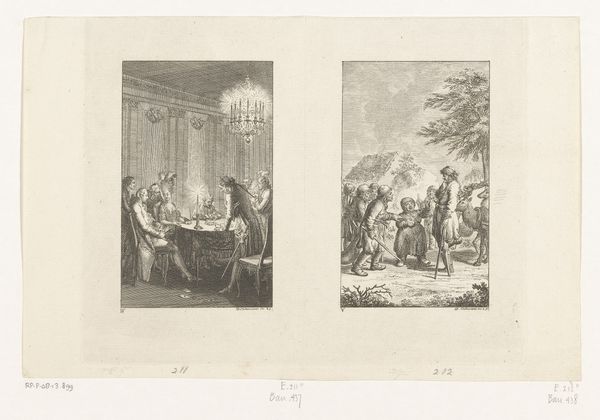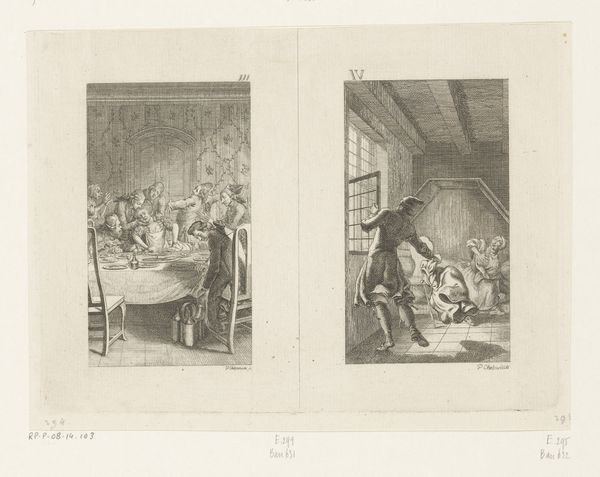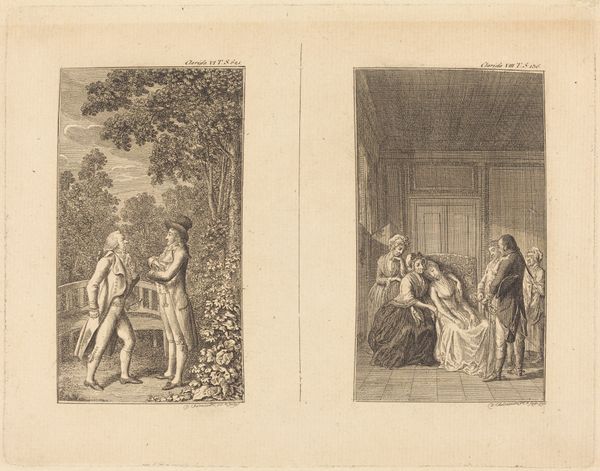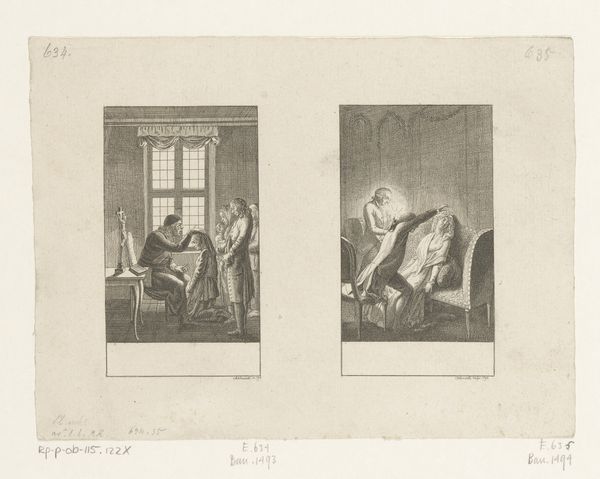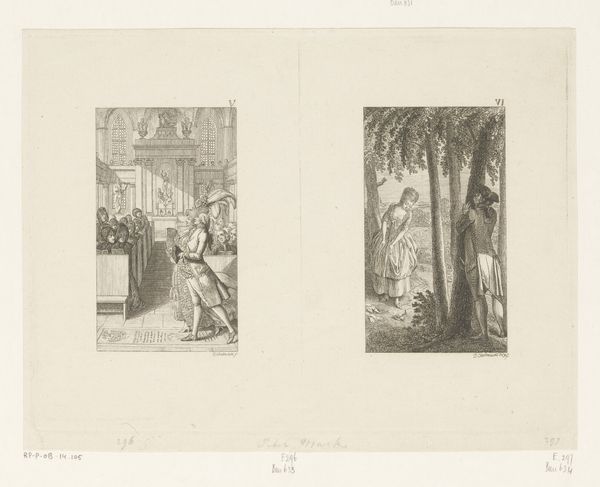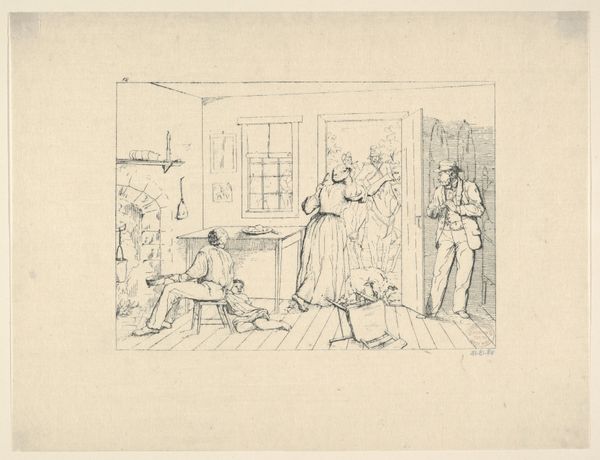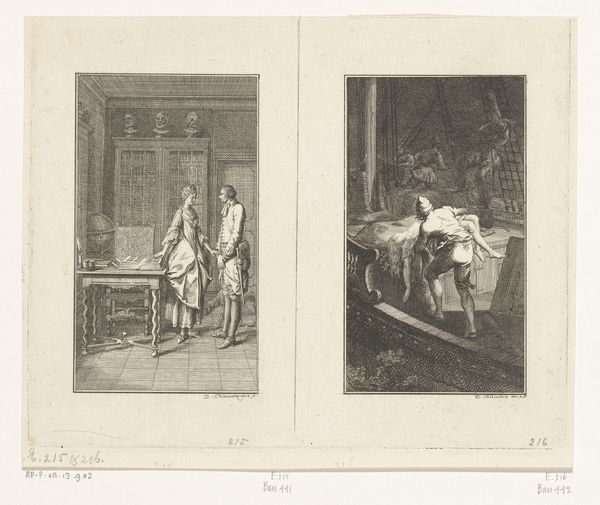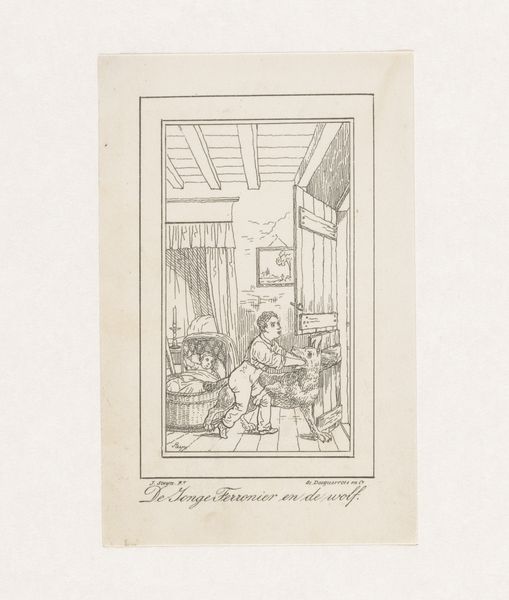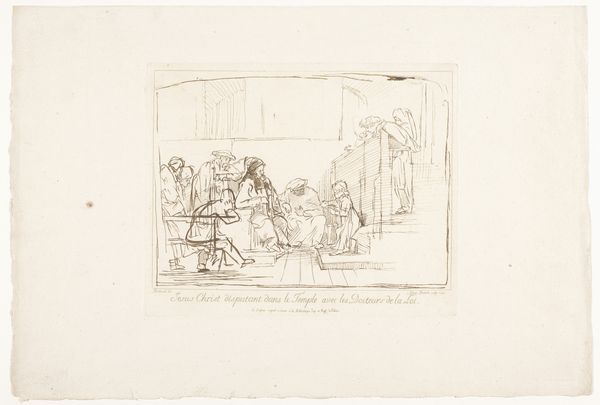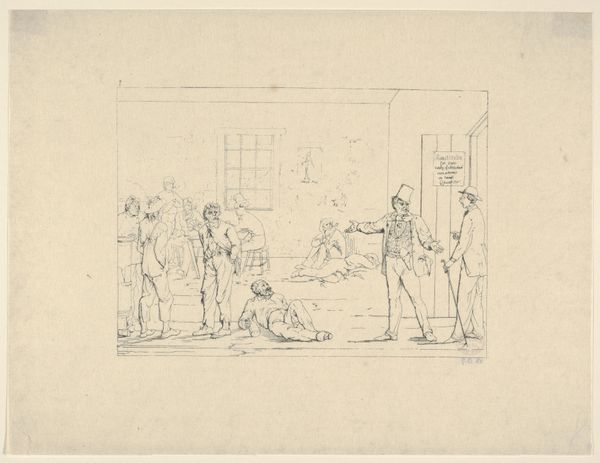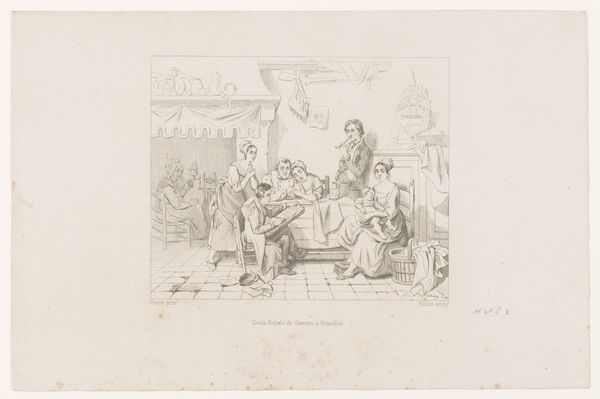
drawing, ink, pen
#
portrait
#
drawing
#
comic strip sketch
#
neoclassicism
#
pen sketch
#
landscape
#
figuration
#
personal sketchbook
#
ink
#
sketchwork
#
ink drawing experimentation
#
pen-ink sketch
#
line
#
pen work
#
sketchbook drawing
#
pen
#
genre-painting
#
storyboard and sketchbook work
#
sketchbook art
Dimensions: height 173 mm, width 202 mm
Copyright: Rijks Museum: Open Domain
Curator: Jacob Ernst Marcus's ink drawing, "Family with a Microscope/Seller", created between 1784 and 1826, offers us a glimpse into 18th-century life. What strikes you upon seeing it? Editor: The immediate contrast between the two scenes depicted jumps out. One feels intimate and domestic, while the other exudes a sense of public exchange, maybe commerce. There's a duality present in this work that I find quite compelling. Curator: Absolutely. Let's consider the composition of each scene. In the interior, we see a family gathered around a table, presumably examining something through a microscope. The lines are precise, creating a structured, almost neoclassical feel. The exterior scene, however, portrays a group engaging with a figure holding what appears to be a basket – suggesting a transaction of some kind. Note how the artist delineates light and shadow with varying densities of line. Editor: And doesn't it make you wonder about class dynamics at play here? The interior scene smacks of bourgeois scientific curiosity, whereas the exterior might be showing a common vendor offering their wares to the wealthy family. Who gets to look *through* the microscope versus who is subject to its scrutiny, if you will. Curator: An astute point. The microscope becomes not merely a scientific instrument but a symbol of power and knowledge. From a formal perspective, Marcus's strategic use of line directs our gaze. The tight, controlled strokes within the domestic setting lend a sense of order and intellectual pursuit. Editor: The seemingly simple act of seeing becomes so complex! Who has access to the means of seeing – to knowledge and advancement – and who is only ever *seen*? Marcus has subtly layered so many questions in these juxtaposed scenes. What appears at first to be a straightforward genre painting is, on closer inspection, a layered social commentary. Curator: Indeed. By meticulously structuring his composition, Marcus invites us to consider the subtle nuances of 18th-century society. It’s through a careful appreciation of line, form and juxtaposition, after all, that such a powerful historical reading is made possible. Editor: It’s amazing how a simple drawing can provoke such complex reflections. Marcus prompts us to look deeper not only into his artwork but also into the broader social landscape of his time, one that reverberates still today.
Comments
No comments
Be the first to comment and join the conversation on the ultimate creative platform.
